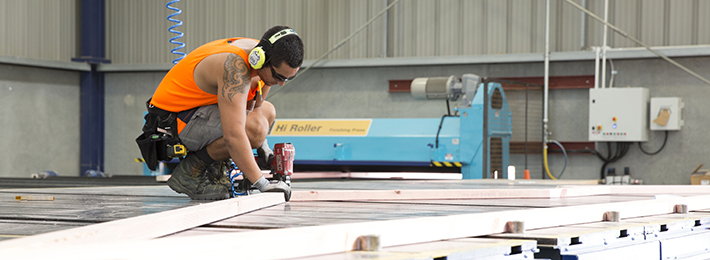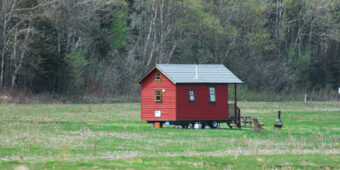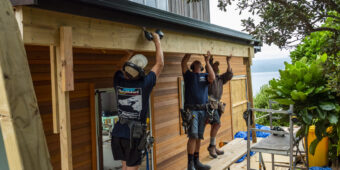PlaceMakers nails factory upgrade
01 May 2017, Community & Sponsorship, Featured

PlaceMakers investment in the recently refurbished Waikato frame and truss plant has been a huge win for both the plant’s employees and its customers, with productivity gains in excess of 50% and climbing
The plant’s refurbishment was staged over a period of around 12 months and was completed recently following the installation of a new air extraction system.
Steve Johnston, Manufacturing Manager at Frame and Truss Waikato and Bay of Plenty, says that production has increased up to 100%.
Steve says that most of the productivity gain is a direct result of new machinery.
“We installed two pre-nail Spida speed lines. Previously, we had to manually build all the frames on the line as it moved down the conveyor belt, whereas now we have a component table working alongside the speed lines,” he says.
“Where there needs to be a door or window, we create that as a component on the table and then drop it into the frame on the speed line where it is being built. It’s a lot safer, quicker and achieves a better finish; we’ve calculated it’s around 35% faster than the old method.”
The speed lines also came with an automated nog nailer, which fixes the nogs to the studs during the pre-assembly phase.
Pressing the pace
Steve says that in addition to the speed lines, they also installed two new truss presses just before Christmas.
“Our new main multinail press has the capacity to build a 14x4m truss, so we’re actually able to produce two smaller ones simultaneously, which we couldn’t do before,” he says. “We can now make a standard truss in three minutes, down from an average time of 10-12 minutes.”
He says they also added a jack truss press, which has allowed them to automate a lot of the joining process when producing smaller trusses.
Other changes include improving the plant’s layout and expanding the number of safety walkways.
Fresh approach
Steve says that because of the new machinery and increased productivity, a new extraction system was required to remove excess dust.
“It wasn’t dangerous as such, but obviously we just want to reduce the amount of dust our staff is exposed to as much as possible. The air is as clear as it is outside now.”
The air wasn’t the only part of the plant to be refreshed, with new training systems put in place to help keep staff motivated and encourage their individual growth.
“With new guys on the line, they’re not allowed to touch a nail gun for the first two weeks, and until their trainer is happy, they’re not allowed to work unsupervised,” says Steve. “I think the biggest change we’ve introduced, though, is cross-training.”
Training success
“For example, there are three pre-nail stations and it used to be that someone in the pre-nail team only knew how to work their station.
Now if someone is away or needs a hand, they can just jump in and start working, so we’ve got a more flexible workforce.”
The plant upgrade also involved the introduction of two other training initiatives – Step Up, an internal Fletcher Building training initiative, and Whaka Tupu, a Maori leadership course.
“We have a lot of guys working here who have faced some challenges growing up. I see them working hard and pulling together. These courses are aimed at not just upskilling our staff but helping them grow, develop leadership skills and work as a team,” says Steve, who has noticed a big difference in staff attitudes.
“They’re trying to beat all their records and morale has just gone through the roof! Everyone is really taking pride in their work now, because of the quality product we’re able to produce.”
Register to earn LBP Points Sign in



